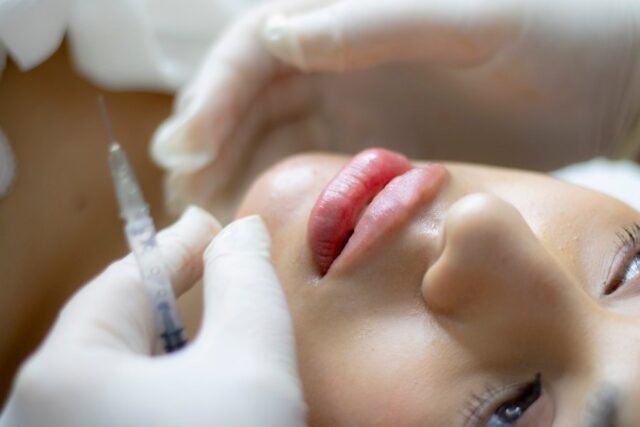Dermal fillers have become a popular option for people looking for non-invasive cosmetic treatments in the pursuit of age-defying aesthetics and eternal beauty. These injectable treatments offer a quick and effective solution to combat signs of aging, from smoothing out wrinkles to restoring volume in various facial areas. However, the increasing demand for dermal fillers has also led to a surge in practitioners offering these treatments. As the industry expands, it becomes crucial for professionals to navigate through potential pitfalls and steer clear of common mistakes that could compromise both the safety and satisfaction of their clients. In this blog post, we will explore seven prevalent errors that practitioners should be wary of when administering dermal filler treatments.
Not Understanding Dermal Fillers
A fundamental mistake that practitioners often make is insufficient knowledge about the dermal fillers they are using. Experts at Foxy Fillers say that dermal fillers are substances that are injected into the skin to add volume, fill in wrinkles, and enhance facial contours. It’s imperative for practitioners to grasp the science behind these fillers, including their composition, intended uses, and potential side effects. Without a comprehensive understanding of the various types of dermal fillers available, practitioners may struggle to recommend the most suitable option for their clients. Additionally, inadequate knowledge can lead to improper administration, resulting in suboptimal outcomes and potential complications.
Neglecting Patient Consultations
In the rush to meet client demands, some practitioners may overlook the importance of thorough patient consultations. A comprehensive consultation is not just an administrative formality; it serves as a crucial step to assess the client’s expectations, medical history, and suitability for dermal filler treatments. Skipping or rushing through this phase can lead to misunderstandings, unrealistic expectations, and ultimately, dissatisfied clients. Taking the time to engage in open and transparent communication during consultations ensures that both parties are on the same page, fostering a trusting relationship that is vital for a successful treatment experience.
Overpromising And Under Delivering
Page source: https://pixabay.com/photos/portrait-beautiful-girl-lips-8042052/
While the desire to meet client expectations is natural, practitioners must be cautious not to overpromise results that cannot be realistically achieved. Setting unrealistic expectations can lead to disappointment, eroding the trust between the practitioner and the client. It’s crucial to communicate honestly about the potential outcomes of dermal filler treatments, emphasizing that results may vary based on individual factors. By managing expectations effectively, practitioners can build a reputation for integrity and transparency, key components of a successful and sustainable practice.
Inadequate Training And Skill Development
Inadequate training and skill development represent a significant pitfall in the realm of dermal filler treatments. Administering these cosmetic enhancements demands not only a solid theoretical foundation but also a refined practical skill set. Some practitioners, eager to enter the field or capitalize on the growing demand, may underestimate the importance of continuous education and skill enhancement. Mastery of facial anatomy, injection techniques, and understanding the nuances of different dermal fillers is essential for delivering optimal and safe results. Lack of proper training can lead to suboptimal outcomes, ranging from asymmetrical results to potential complications. Moreover, as the cosmetic industry evolves, practitioners must commit to ongoing education, attending workshops, seeking mentorship, and staying abreast of emerging trends to ensure they provide the highest standard of care and maintain the trust of their clientele. In the dynamic landscape of aesthetic medicine, investing in one’s expertise is not just a recommendation but a fundamental requirement for success.
Poor Injection Technique
Poor injection technique is a significant pitfall that practitioners must be vigilant to avoid when offering dermal filler treatments. The artistry of administering dermal fillers relies heavily on precision, and any deviation from optimal injection methods can result in less-than-desirable outcomes. Rushed or careless approaches to injections may lead to uneven distribution, lumps, or asymmetry, compromising the natural look that clients seek. Additionally, neglecting the importance of proper depth, angle, and distribution during the injection process can contribute to complications such as bruising, swelling, or, in severe cases, vascular compromise. A commitment to honing and maintaining impeccable injection techniques is essential for practitioners aiming to deliver consistent, high-quality results that meet the expectations of their clients while prioritizing their safety and overall satisfaction.
Lack Of Follow-Up And Aftercare
The relationship between the practitioner and the client extends beyond the treatment session. Neglecting post-treatment care and follow-up can hinder the overall experience and satisfaction of the client. It is essential to provide clear post-treatment instructions, including potential side effects and what to expect during the recovery period. Additionally, scheduling follow-up appointments allows practitioners to assess the results, address any concerns, and make adjustments if necessary. A lack of follow-up can leave clients feeling unsupported and dissatisfied, potentially damaging the practitioner’s reputation and client retention rates.
Insufficient Focus On Safety
Insufficient focus on safety in dermal filler treatments is a grave mistake that can have severe consequences for both practitioners and clients. In the pursuit of aesthetic perfection, some practitioners may be tempted to cut corners, neglecting crucial safety measures that should be non-negotiable. This includes using unapproved products, overlooking proper sterilization protocols, or failing to consider contraindications. Such oversights can lead to infections, allergic reactions, and even more serious complications, jeopardizing the well-being of the client and tarnishing the practitioner’s reputation. Prioritizing safety is not just an ethical obligation but also a strategic decision that contributes to the long-term success of a practitioner’s career. A commitment to stringent safety standards not only safeguards the health of clients but also establishes trust and credibility, essential elements for a thriving and sustainable practice in the competitive field of cosmetic enhancements.
As the demand for dermal filler treatments continues to rise, practitioners must recognize and avoid common mistakes that could jeopardize the success of their practice. From acquiring a comprehensive understanding of dermal fillers to prioritizing patient consultations and safety, each aspect plays a pivotal role in delivering satisfactory results. By steering clear of these common pitfalls, practitioners can build a reputation for excellence, fostering trust and loyalty among their clientele. As the cosmetic industry evolves, practitioners must remain vigilant, continually enhancing their skills and prioritizing the well-being of their clients to thrive in this competitive landscape.














